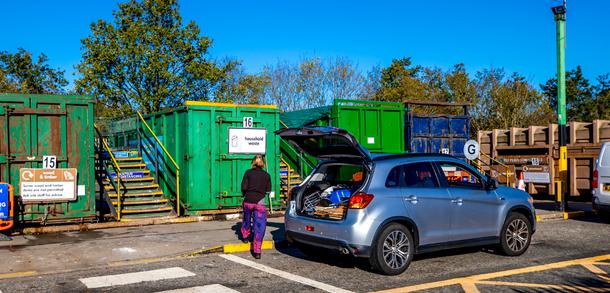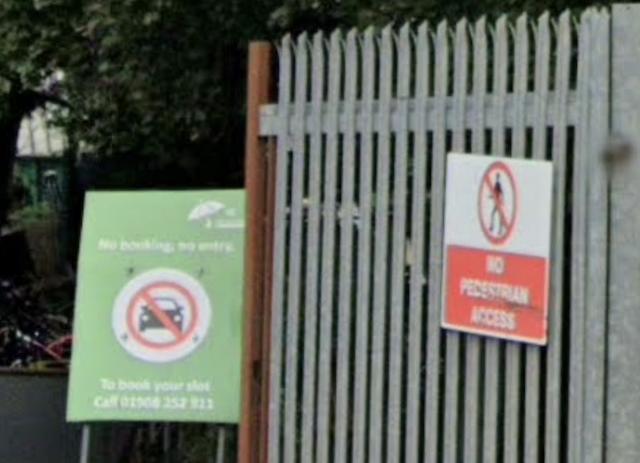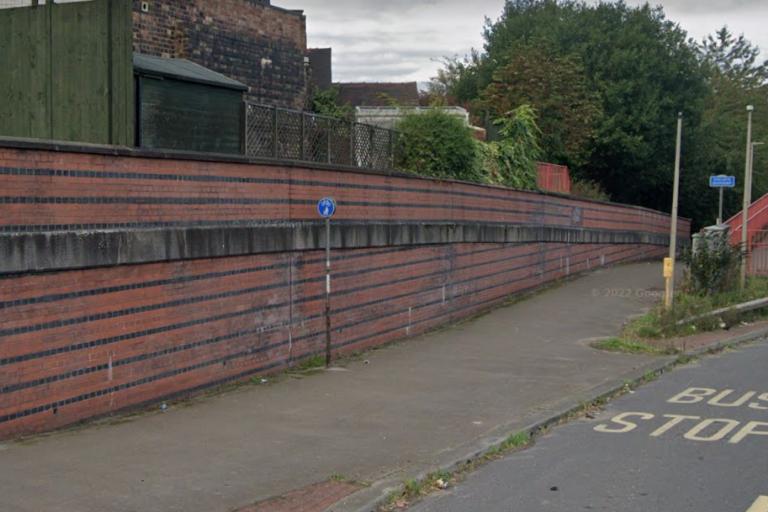- News
- Reviews
- Bikes
- Accessories
- Accessories - misc
- Computer mounts
- Bags
- Bar ends
- Bike bags & cases
- Bottle cages
- Bottles
- Cameras
- Car racks
- Child seats
- Computers
- Glasses
- GPS units
- Helmets
- Lights - front
- Lights - rear
- Lights - sets
- Locks
- Mirrors
- Mudguards
- Racks
- Pumps & CO2 inflators
- Puncture kits
- Reflectives
- Smart watches
- Stands and racks
- Trailers
- Clothing
- Components
- Bar tape & grips
- Bottom brackets
- Brake & gear cables
- Brake & STI levers
- Brake pads & spares
- Brakes
- Cassettes & freewheels
- Chains
- Chainsets & chainrings
- Derailleurs - front
- Derailleurs - rear
- Forks
- Gear levers & shifters
- Groupsets
- Handlebars & extensions
- Headsets
- Hubs
- Inner tubes
- Pedals
- Quick releases & skewers
- Saddles
- Seatposts
- Stems
- Wheels
- Tyres
- Health, fitness and nutrition
- Tools and workshop
- Miscellaneous
- Tubeless valves
- Buyers Guides
- Features
- Forum
- Recommends
- Podcast
news
“Discriminatory” council urged to “change car brain mindset” after cyclists banned from entering recycling centres on bikes; ‘Interesting’ Highway Code takes; Cyclists blast sports reporter for filming “unacceptable” group ride + more on the live blog
SUMMARY
 Recycling Centre (Love Essex)
Recycling Centre (Love Essex)01 February 2023, 09:16

“Discriminatory” council urged to “change car brain mindset” after cyclists banned from entering recycling centres on bikes
Essex County Council has been accused of introducing “discriminatory” measures against cyclists after it announced that, as part of a new trial booking system for recycling centres in the county, people on bikes will be asked to leave them at the gates.
The council revealed at the start of this week that a new booking system will be tested at all ECC recycling centres from 13 March, in a bid to “help manage waiting times, reduce congestion, and improve the customer experience”.
> Cyclists banned from Hereford tip during coronavirus outbreak
While Blue Badge holders, pedestrians, and cyclists will not be required to book a slot at the skip, Love Essex nevertheless confirmed that “cyclists visiting recycling centres are asked to leave their push bikes at the pedestrian gate and should not bring them into the site”.
‘Why?’, I hear you cry.
Well, because “there are no cycle paths for them to safely travel on the pedestrian walkways”, apparently.
The rather questionable policy was condemned on Twitter last night, with one cyclist describing the bike ban as “discriminatory” not only to cyclists, but also to “those with disabilities or mobility issues, as well as those with cargo bikes or trailers”.
I suggest you remove this advice, we have every right to cycle into the site like every person driving! It is also discriminatory to those with disabilities or mobility issues as well as those with cargo bikes or trailers! I request you to show your Equality Impact Assessment. https://t.co/WzU4DH07hO pic.twitter.com/2yagCnCtVQ
— @2_Wheeled_Wolf @ mastodon.social 🇪🇺 (@2_Wheeled_Wolf) January 31, 2023
“We have every right to cycle into the site like every person driving,” wrote Twitter user 2 Wheeled Wolf.
“I’ve taken refuse to the recycling centre for years without incident like I did last week. I suggest you change your car brain mindset on this as we have to cycle on the roads to get there and there’s no more risk cycling on your sites with drivers.”
Failing to change this & try stop me from accessing the recycling centre @loveessexuk, I will seek legal advice on preventing access to a person with a disability using their cycle as a mobility aid & I'm sure media like @roadcc would be interested too! Do the right thing!
— @2_Wheeled_Wolf @ mastodon.social 🇪🇺 (@2_Wheeled_Wolf) January 31, 2023
Other cyclists were just as baffled by Essex County Council’s ‘no bikes at the tip’ policy, and in response shared their own, more pleasant experiences at recycling centres in other parts of the country.
Pedalmania tweeted the following, altogether more inclusive and Highway Code-worthy advice from Rugby:
This is very silly
Here is what it should look like: pic.twitter.com/h20vRg5GRw
— pedalmania (@pedalmania1) January 31, 2023
While others highlighted the enjoyable side of riding your bike to the tip:
@loveessexuk - your guidance ref cycles at your recycling centres is silly. We regularly go to our local centre by bike and @WestLondonWaste couldn’t be more welcoming. pic.twitter.com/UvccP5l7H5
— Charlotte Baker (@charlie_baker23) February 1, 2023
Me: cycling my bakfiets to the recycling centre in Hillingdon on Saturday
The guy who works there as I rode off: "can you do a wheelie?"Best tip run ever
— Alex (@alzrnb) January 31, 2023
01 February 2023, 10:57
Motorists and their, ahem, ‘interesting’ Highway Code interpretations
With the often confrontational and sometimes toxic online conversations between cyclists and motorists making headlines in recent days, this confident (and rather misguided) attempt to interpret the Highway Code caught my eye while scrolling this morning:
Just when you think there's no new surprises you see something else pic.twitter.com/81t5EkXp8P
— Trundling on in the High Peak (@GiveMeSpace3) January 31, 2023
For those of you foiled by Twitter’s weird layout, the post reads: “Actually the Highway Code states you have to give way to overtaking vehicles. Cyclists are not above the Highway Code.”
However, as another user noted, that’s not exactly what the Highway Code actually says:
Bit different to what's stated there. pic.twitter.com/gIs4ObhZAN
— Rhapsody Angel (@Blodeuweddmoon) January 31, 2023
That latest motoring hot take prompted road.cc reader Ian Spencer – who’s weighed in on the whole ‘riding in the middle of the lane’ thing before on the live blog – to share some rules from the “Highway Code, according to drivers who haven’t read the Highway Code” (available in all good, imaginary bookshops):
It seems most people evolve their own HWC, then get incensed when other people don't follow their imaginary rules.
You know, things like you can go through red if you've been held up for a bit when it's busy, or you can undertake if the car in front should be going faster.
— Ian Spencer (@IanMSpencer) February 1, 2023
If the car in front is not driving at the speed limit + 10% you SHOULD drive extremely closely and shout and swear very loudly.
If you pull out in front of a vehicle and it flashes its lights to alert you to its presence, you MUST immediately brake sharply to alert it to yours.
— Ian Spencer (@IanMSpencer) February 1, 2023
You are entitled to obstruct highway, pavements, and bike lanes and you may park on zebra crossings if:
A) You are a delivery driver.
B) You are in the building trade or otherwise employed.
C) Your car costs more than £50k (when new).
D) Your partner is wearing Jimmy Choos.
— Ian Spencer (@IanMSpencer) February 1, 2023
What else?
You MUST give way to a car approaching a main road from a junction if the approaching car might be delayed from joining the main carriageway. You should ignore the 3 mile queue behind you.
— Ian Spencer (@IanMSpencer) February 1, 2023
It's fine to park on double yellows provided you put your hazard warnings on?
— Trundling on in the High Peak (@GiveMeSpace3) February 1, 2023
If it's a narrow road, and you worry about your wing mirrors when you're parked it's perfectly fine to park across the full width of the pavement as it's OK for people to just walk in the road.
— Trundling on in the High Peak (@GiveMeSpace3) February 1, 2023
You may use a handheld mobile phone whilst driving if:
A) You are a builder (in van or private car) at any time.
B) If you are taxi driver, only if you are also fiddling with the meter and/or satnav at the same time, or the cab firm owner at anytime.
C) when near a cyclist.
— Ian Spencer (@IanMSpencer) February 1, 2023
Ian’s certainly been busy this morning (good lad), but can you think of any more carefully-followed rules from the Bad Drivers’ Highway Code?
01 February 2023, 13:25
“I’m not gonna run them over, but get off the road!”: US sports presenter blasted by cyclists – including Jonathan Vaughters – for posting video of “unacceptable” group ride
US-based sports presenter Jake Reiner – the son, incidentally, of This is Spinal Tap actor and writer Rob Reiner – experienced what he called “one of the wilder social media days I’ve had in a while” after posting a clip of a group of cyclists riding in front of him on Ocean Avenue in Santa Monica, California.
This is unacceptable pic.twitter.com/0402x2H5Ll
— Jake Reiner (@Reiner_Jake) January 31, 2023
Reiner, who works as a sports anchor for Los Angeles-based and CBS-owned KCAL News, claimed to have spent “five minutes” driving behind the cyclists, and captioned the clip: “This is unacceptable”.
The presenter’s stance on the group ride was supported by fellow sports host Ashley Brewer, a regular on ESPN’s SportsCenter, while Reiner also indulged in a few questionable replies to other anti-cycling tweets:
Nothing enrages me more
— Ashley Brewer (@ESPNAshley) January 31, 2023
Mine was severely
— Jake Reiner (@Reiner_Jake) January 31, 2023
That’s what IM saying 🤦♂️
— Jake Reiner (@Reiner_Jake) January 31, 2023
And it has nothing to do with legality. It’s just annoying. Use the bike lane and get out of the roadway that’s all lol
— Jake Reiner (@Reiner_Jake) January 31, 2023
Unsurprisingly, the clip – and the circumstances in which it was filmed – attracted the attention of Cycling Twitter, including some familiar faces from the live blog:
this is what the bike lane looks like, wonder why they're not using ithttps://t.co/80A0PObJmw
— ben (avid driver) (@BFryback) February 1, 2023
Filming on your cellphone while driving is unacceptable. And a crime.
— Weird Sports Merch (@weirdsportmerch) January 31, 2023
Get off your phone whilst driving, Jake, and share the road better.
— CyclingMikey (@MikeyCycling) February 1, 2023
Don't panic, pay attention and follow the rules and you won't hurt anyone.
Imagine everyone on a bike is someone you love. Dial back the rage.
— Adespoto (@Adespoto3) January 31, 2023
Helpfully, Reiner clarified that he was never tempted to hurt the cyclists, he just believes that they shouldn’t be on the road:
Yeah I’m not gonna run them over lol but like get off the road!
— Jake Reiner (@Reiner_Jake) January 31, 2023
Ah, that’s that cleared up then…
Even EF Education-EasyPost manager Jonathan Vaughters took a break from dreaming up zany kit releases to get involved, with some pertinent reminders for his country’s sports reporters:
Hey, I find it unacceptable that we lose human productivity and electricity watching someone like you endlessly talk about a “pass-time”….But, I don’t complain about it. I let others have their space and move on with my day.
— Jonathan Vaughters (@Vaughters) February 1, 2023
Ashley, this is a group saving you $. Saving healthcare $$. Saving tax on building infrastructure for only cycling. Saving tax payer dollars for carbon neutral transport. And saving tax money to build practice areas for cycling. Like any of the sports you comment on already have
— Jonathan Vaughters (@Vaughters) February 1, 2023
Or sports stadiums. That create traffic jams, resource waste.
— Jonathan Vaughters (@Vaughters) February 1, 2023
And some broader reminders, too:
You’re really going to try to quote scripture to justify biking in a lane dedicated to motor vehicles? Twitter is absolutely NUTS 😂😂😂
— Ashley Brewer (@ESPNAshley) February 1, 2023
This has been one of the wilder social media days I’ve had in a while
— Jake Reiner (@Reiner_Jake) February 1, 2023
I’m sure…
01 February 2023, 16:49
Racing roundup: Biniam Girmay lays down marker for spring classics, as Arnaud De Lie makes it two from three for 2023
VICTORY FOR BINIAM GIRMAY!!!!!!!!!#VCV2023 pic.twitter.com/00vOjMvd8h
— Intermarché-Circus-Wanty (@IntermarcheCW) February 1, 2023
Spring classics contenders, watch out: Biniam Girmay is coming for you.
After a sensational debut season in the pro ranks, which saw Girmay pick up breakthrough wins at Gent-Wevelgem and the Giro d’Italia, Intermarché-Circus-Wanty’s 22-year-old Eritrean sensation has certainly hit the ground running in 2023.
After a second and a third in Mallorca last week, Girmay secured his first win of the season – and his first leader’s jersey in a European stage race – at the Volta a la Comunitat Valenciana today, surviving the day’s main climbs before blowing away his rivals on the uphill drag to the line to Altea to lay down an ominous marker for the rest of the season.
"Biniam Girmay was on 𝐚𝐧𝐨𝐭𝐡𝐞𝐫 𝐩𝐥𝐚𝐧𝐞𝐭 there!" 👽
The @IntermarcheCW rider is 𝒔𝒊𝒎𝒑𝒍𝒚 𝒖𝒏𝒔𝒕𝒐𝒑𝒑𝒂𝒃𝒍𝒆 as he storms to Stage 1 victory at the Volta a la Comunitat Valenciana 🇪🇸#VCV2023 | @GrmayeBiniam pic.twitter.com/ajZNITKM3h
— Eurosport (@eurosport) February 1, 2023
And it wasn’t even close – when Girmay launched his sprint with almost 300m to go, he simply left Jumbo-Visma’s 21-year-old powerhouse Olav Kooij and Movistar’s Iván García Cortina (along with half of the disorganized Spanish squad, who followed close behind) trailing in his wake.
The cobbled classics are set to be spicy this year…
Arnaud De Lie won the first stage of Etoile de Besseges with a monstrous uphill sprint against world-class Mads Pedersen and Cosnefroy. That's pretty frightening stuff for a 20-year old. 😳 #EtoiledeBesseges
📽️ @BlancoAsegurado pic.twitter.com/TsadSGRt96— Mihai Simion (@faustocoppi60) February 1, 2023
And speaking of young riders laying down a marker, Lotto-Dstny’s 20-year-old sprinting sensation Arnaud De Lie continued his meteoric career trajectory at the Etoile de Bessèges this afternoon, securing his second win from three race days in 2023.
The precocious Belgian, who won’t even be able to order a beer in America until March, followed former world champion Mads Pedersen’s attack on the brutally steep ramp to the finish in Bellegarde, before easily dispatching the Trek-Segafredo rider, along with AG2R’s Benoît Cosnefroy, in the final 100 metres for a stunning win.
Cycling’s fine young things clearly show no signs of slowing down this season… And doesn’t it feel good to almost have too much racing to watch again?
01 February 2023, 16:21
“What happens if I’m taking a bike to the tip?”: Talking rubbish in the comments section
Well, there’s been plenty of rubbish spouted on today’s live blog (even more than usual, I know).
Here’s a selection of your thoughts on the extremely exciting topic du jour – taking your bike (or not) to the tip:
eburtthebike: “I’m confused, even more than normal: ‘Cyclists visiting recycling centres are asked to leave their push bikes at the pedestrian gate and should not bring them onto the site’ and ‘Please note, any resident that parks outside and attempts to walk waste in will be refused entry.’
“One rule for cyclists and the opposite rule for drivers; highly consistent.”
delthebike: “The most dangerous traffic you'll encounter on your tip trip is not the traffic on the site, typically with a 5mph site limit, it will be the 20 to 40mph roads you have to navigate to get there in the first place.”
Martin73: “Sounds like Essex Council is promoting active travel to me. That short walk from the entrance to the bins will do cyclists the world of good. Probably best to not treat it like a training ride though, turn off Strava and leave your SPDs at home.”
HoarseMann: “At least they are letting pedestrians use the tip. In Milton Keynes, unless you have a car, you can't use the tip. The booking form asks you for the numberplate of the vehicle you plan to use – no booking, no access!
“There's even a ‘no pedestrian access’ sign on the entrance [below], yet once you drive through the gates, you can get out of your car and walk about. No wonder there’s a fly-tipping epidemic in the city.
Born_peddling: “The local authority where I’m at hides behind the excuse ‘vehicles only’ as they have plates, but the CCTV cameras were provided to read the newer QR code stickers for van/trailer users. They even attempted to have an old fella arrested because ‘he was trying to subvert the system by using the QR code system for his cargo bike and trailer’!”
Festina: “My local tip (South Gloucestershire) you can turn up whenever by car but if you walk or cycle you have to book an appointment which will require two days’ notice. Council build everything around a car mentality.”
The little onion: “My personal frustration is going to pick up a parcel from the post office depot - all the ones within a 15 mile radius of our house have ample car parking, but absolutely nowhere to lock up a bike. Usually you are told to lock them against a railing 100 yards away, thus blocking the pavement slightly.
“Why can we plan for ample car parking, but not even think about crappy Sheffield stands for bikes?”
Who says you can’t bring a fridge to the tip by bike? Not road.cc reader kamoshika, anyway.
And finally…
mattw: “What happens if I am taking a bike to the tip?”
hawkinspeter: “Just leave it outside and let them figure it out.”
01 February 2023, 16:08
(Retro Raleigh) Bikes on Strike
Spotted by road.cc’s roving Londoner Simon this lunchtime on Regent Street:
01 February 2023, 15:34
01 February 2023, 15:21
Road dogs
Dogs in the road! Hope all the riders are okay #VCV2023 pic.twitter.com/bEkuYrokJA
— Tim Bonville-Ginn (@TimBonvilleGinn) February 1, 2023
The European road racing season may still be in its infancy, but we’ve already had our first worrying case of unsupervised, and I imagine anxious, dogs making their way onto the course as the peloton passes.
Our canine friends appeared as the riders made their way off the descent of the Coll de Rates, the popular training climb and mythical Strava segment near the Costa Blanca, with over 50km to go on the opening stage of the Volta a la Comunitat Valenciana.
Thankfully, it seems that no four-legged pets or two-wheeled pros were hurt during the impromptu mid-race incursion.
01 February 2023, 14:53
Cheeky…
Saudi Arabia’s Azzam Alabdulmunim here, getting a little help from the commissaire’s car as he made his way back to the peloton at his home tour this afternoon (and after a particularly sticky bottle from the team car too):
Lesson 1 How to get back onto the rear of the peloton #SaudiTour pic.twitter.com/HX8LHa2Rct
— John Maguire 🇺🇦 (@velo_bristol) February 1, 2023
01 February 2023, 14:23
U23 world time trial champion Søren Wærenskjold takes first pro win at Saudi Tour
Uno-X’s promising Norwegian Søren Wærenskjold demonstrated his uphill sprinting prowess with a stunning late surge to take the first professional victory of his young career on stage three of the Saudi Tour.
With the punchy finale to Abu Rakah proving too much for race leader Dylan Groenewegen, stage two winner Jonathan Milan briefly appeared to have the measure of all the other fast men as he launched his sprint with 250m to go.
However, 22-year-old Wærenskjold, who took the U23 world time trial in Wollongong last year, proved he had the speed and the power to overhaul the Bahrain-Victorious sprinter in the dying metres for a breakthrough win.
Vikings conquering the desert! 🇳🇴🏜️The U23 ITT world champion, Søren Wærenskjold proved his talent and won stage 3 of @thesauditour in a tough sprint against Jonathan Milan. His first pro win and the first of the year for @UnoXteam . 👏 #SaudiTour pic.twitter.com/BOT6St2xHl
— Mihai Simion (@faustocoppi60) February 1, 2023
“It’s fantastic, I’ve waited for this for some time,” the Norwegian said at the finish. “I’ve been good in the U23 class, but I haven’t managed to take a pro win yet, so this is really fantastic.”
And if a sprint at the end of a long slog through a desert wasn’t enough to sort your cycling fix (to be honest, I’d be worried if it was), two – yes two! – of the traditional European stage race curtain raisers are kicking off this afternoon, the Étoile de Bessèges and the Volta a la Comunitat Valenciana.
Thank God it’s February – bring on the road racing!
01 February 2023, 13:56
01 February 2023, 12:47

Fancy one day leading out Sam Bennett? Bora-Hansgrohe and Red Bull launch global talent scouting programme
In the latest iteration of ‘The X Factor, but with cyclists’, Bora-Hansgrohe has launched its new talent spotting programme, at the end of which two promising racers will be awarded contracts at the German squad’s feeder team, as well as a Red Bull partnership deal.
The ‘Red Bull Junior Brothers’ scheme, according to Bora-Hansgrohe, aims to seek out “the next generation of professional road cyclists”, by creating a pathway for young riders all over the world to enter the pro ranks.
[PhotoGomezSport]
The programme is open to U19 male riders – so you have to be born in 2006 or 2007 (which I’m sure makes us all feel very old) – who can sign up and log their rides on Zwift or Strava before 31 May.
The top performing riders, judged on their logged rides and subsequent video application, will be invited to a training camp in August.
The chosen two will then be awarded contracts for Bora’s junior team Auto Eder and given Red Bull athlete partnership deals (which I assume includes the funky helmets worn by Tom Pidcock and Wout van Aert).
“This is the first time that Red Bull is involved with a project in road cycling globally, and I am proud that they are doing this together with Bora-Hansgrohe,” says team manager Ralph Denk.
“In addition, the programme itself is also a milestone for us in terms of scouting. Through the Red Bull Junior Brothers, we can search for talent worldwide and even reach those who might not otherwise take part in races at all.”
So, if you’re a junior racer and fancy one day riding alongside Sam Bennett and Aleksandr Vlasov, here’s your chance…
01 February 2023, 12:15
Team off-road.cc is back!
> Team ORCC is back for another season. Let's meet the sponsors
What, no gravel bike for me?
01 February 2023, 11:37
“How does writing a few extra lines in a book that the majority of drivers haven’t read in literally decades positively effect behaviours?”: The Highway Code changes, one year on – a case study
Right then Highway Code changes over a year ago... how does writing a few extra lines in a book that the majority of drivers haven't read in literally decades positively effect behaviours... 🤔 Well let's look at one particular part of the changes, the priority/right of way given
— Mark Hodson (@markandcharlie) February 1, 2023
While we’re on the subject of the Highway Code and how drivers interpret (or just completely ignore) it, West Midlands Police’s Mark Hodson – one of the co-founders of the pioneering cycling safety initiative Operation Close Pass – posted a lengthy thread this morning on the success of last year’s much-discussed updates.
To mark the one-year anniversary of the changes, Hodson assessed how one of the updates – that motorists should now give way to pedestrians at junctions – has positively contributed, or not, to the behaviour of motorists.
Here’s what he had to say:
“How does writing a few extra lines in a book that the majority of drivers haven’t read in literally decades positively effect behaviours?
“Well, let’s look at one particular part of the changes, the priority/right of way given to pedestrians at junctions. Now it’s a ‘should’ rule, not a ‘must’, so there are circumstances where a driver who thinks it is not safe to give way to the pedestrians could justify not giving priority, but that obviously is on an evidential basis and most likely will be due to another offending driver’s behaviour... tailgating.
to pedestrians at junctions. Now it's a "should" rule not a "must" so there are circumstances where a driver who thinks it is not safe to give way to the pedestrians they could justify not giving priority, but that obviously is on a evidential basis & most likely will be due to a pic.twitter.com/RIOPk3NDfS
— Mark Hodson (@markandcharlie) February 1, 2023
“So, I monitored a junction over the last three months to see if the new rule was effective. This is the junction [below], perfect as it has excellent all-round visibility so pedestrians can be easily seen.
“The minor road has speed cushions to slow approaching traffic, meaning awareness should be high from slowing drivers and the pedestrian refuge highlights the fact that pedestrians will be crossing at the location.
another offending driver's behaviour...tailgating #OpProximity 🤦♂️
So I monitered a junction over the last three months to see if the new rule was effective. This is the junction, perfect as it has excellent all round visibility so pedestrians can be easily seen. pic.twitter.com/J2YOKCjEqG— Mark Hodson (@markandcharlie) February 1, 2023
The minor road has speed cushions to slow approaching traffic meaning awareness should be high from slowing drivers & pedestrian refuge highlights the fact that pedestrian will be crossing at the location. The main road is a 30mph limit with speed camera signage keeping speeds pic.twitter.com/vJPX4a4FE9
— Mark Hodson (@markandcharlie) February 1, 2023
“The main road is a 30mph limit with speed camera signage keeping speeds low – well, “lower” – and lastly the drivers turning right off the main road have a filter so there’s plenty of opportunity to wait there until the junction is free of pedestrians.
“Now it doesn’t look very busy on the photos and unless the school run is on it generally is quiet, again making it perfect to assess driver behaviour around the new rule.
“So over three months, just over 200 interactions between drivers and pedestrians were monitored by myself at varying times of the day, usually whilst walking the hounds or going to the local shop where drivers could and should have given way to the pedestrian present as per the now-year old rule.
“Only 11 drivers gave way. Interestingly on seven of those positive interactions the pedestrian was walking a dog.
“But I’m fairly sure that if you did this monitoring two years previously the results would be roughly the same – the new rule is ignored or not known by the vast majority of drivers apart from the those eleven who were most likely considerate drivers who would give priority to the crossing pedestrian rule change or no rule change.
“So it's safe to conclude that wholesale driver behaviour has not been improved by the rule change, the few extra lines in the book didn't work...
“So how do you change the careless and inconsiderate offending behaviour in contravention of the rule being regularly exhibited?
“Firstly the initial launch from the Department for Transport was underwhelming to say the least, the rule needs a lengthy high priority educational campaign to raise awareness to the point of no excuse.
“You then follow that up with a bespoke enforcement campaign akin to Operation Close Pass, where in the first 12-month phase educational alternatives, by way of a ten minute roadside input into the changes and why they are important, is given. Only then will you see the change in behaviour desired by the rule change in the Highway Code.
“Or you could introduce regular retesting… but that’s a thread for another day.”
.... but that's a thread for another day #OpRetest @transportgovuk
Right I'm off to walk the hounds and watch some more driver behaviour 😉 👍— Mark Hodson (@markandcharlie) February 1, 2023
01 February 2023, 11:22
01 February 2023, 10:27
‘When your bins are more secure than your cycling infrastructure’
When your bins are more secure than your cycling infrastructure. pic.twitter.com/s4i8HAPC1e
— Max Wilson (@waxwellmilson) February 1, 2023
01 February 2023, 09:54
Intermarché pulls a Harry Redknapp on transfer deadline day
It was only ever going to be a matter of time before Intermarché-Circus-Wanty’s social media manager took time off from celebrating the Belgian team’s ascent to the top of the UCI rankings to delve into everyone’s favourite yellow and freezing journalist-themed day of rumours and fax machines:
Rui Costa did not approve any transfer.
He’s riding @VueltaCV tomorrow and currently asleep in the hotel. https://t.co/GDA0CLxiBQ
— Intermarché-Circus-Wanty (@IntermarcheCW) January 31, 2023
I can just imagine the former world champion leaning out of the window of his Range Rover, telling a drenched reporter, ‘There’ll be no more deals today, I say. I’m away for a cuppa’…
Spot the difference…
After obtaining a PhD, lecturing, and hosting a history podcast at Queen’s University Belfast, Ryan joined road.cc in December 2021 and since then has kept the site’s readers and listeners informed and enthralled (well at least occasionally) on news, the live blog, and the road.cc Podcast. After boarding a wrong bus at the world championships and ruining a good pair of jeans at the cyclocross, he now serves as road.cc’s senior news writer. Before his foray into cycling journalism, he wallowed in the equally pitiless world of academia, where he wrote a book about Victorian politics and droned on about cycling and bikes to classes of bored students (while taking every chance he could get to talk about cycling in print or on the radio). He can be found riding his bike very slowly around the narrow, scenic country lanes of Co. Down.
Add new comment
44 comments

cmedred
|
1 year ago
5 likes


mattw
|
1 year ago
1 like
Mine:
Pedestrian and bicycle access
If there is a queue of traffic waiting to use a recycling centre you cannot park outside and walk waste onto a site.
If you use a mobility scooter or if you do not own a motor vehicle, it may be possible for us to arrange a safe time and day for you to visit on foot or bicycle. Please contact our customer service centre about this.

Mine:
Pedestrian and bicycle access
If there is a queue of traffic waiting to use a recycling centre you cannot park outside and walk waste onto a site.
If you use a mobility scooter or if you do not own a motor vehicle, it may be possible for us to arrange a safe time and day for you to visit on foot or bicycle. Please contact our customer service centre about this.
Couple of questions:
1) why should you be unable to walk waste into a site? Is using one's legs dangerous and/or prohibited?
2) why should mobility scooters or bicycles be disadvantaged compared to car drivers? Do they pay less council tax? Or are they less human than their car-driving brethren?

Mine:
Pedestrian and bicycle access
If there is a queue of traffic waiting to use a recycling centre you cannot park outside and walk waste onto a site.
If you use a mobility scooter or if you do not own a motor vehicle, it may be possible for us to arrange a safe time and day for you to visit on foot or bicycle. Please contact our customer service centre about this.
Couple of questions:
1) why should you be unable to walk waste into a site? Is using one's legs dangerous and/or prohibited?
2) why should mobility scooters or bicycles be disadvantaged compared to car drivers? Do they pay less council tax? Or are they less human than their car-driving brethren?
Standard health and safety response - instead of mitigating any risk, simply ban those who are at risk

Correct! This is how the UK has got to a point where we have a globally excellent road safety record. By fiat, law and engineering we've effectively removed people not in motor vehicles from that paths and streets that have become roads. (Drivers are still crashing and endangering themselves, their passengers and each other - but we've been doing good work on the "safety boxes" and trauma facilities).
We are where we are... but we're still choosing to do it! It's not "remove the hazard from the people" but the opposite. Since we're into classical quotations currently:
They make a desert and call it 'peace'
- Calgacus - as told by Tacitus in his Agricola.

DoomeFrog
|
1 year ago
10 likes
I can attest to Mark Hodson's observations.
I walk to the train station 3 days a week and can count on one hand in the last 12 months how many times drivers have given way to me while crossing a side road. I have even been half way across and nearly mowed down.
Last week, I was on my bike and turning left into a road. I stopped to wait for a lady who was waiting to cross. It took a little bit of interaction to get over her surprise that I had stopped and just as she was about to cross a car cam up up behind me also turned left into the same road and proceeded to go round me and through. The lady had to stop so I waited until she had finally crossed before I proceeded.
I can attest to Mark Hodson's observations.
I walk to the train station 3 days a week and can count on one hand in the last 12 months how many times drivers have given way to me while crossing a side road. I have even been half way across and nearly mowed down.
Last week, I was on my bike and turning left into a road. I stopped to wait for a lady who was waiting to cross. It took a little bit of interaction to get over her surprise that I had stopped and just as she was about to cross a car cam up up behind me also turned left into the same road and proceeded to go round me and through. The lady had to stop so I waited until she had finally crossed before I proceeded.
It's not that they don't know... there was sufficient bitching in the press, local news sites, social meeja etc (it's just asking to be rear ended, since when did we teach people to walk in the road whine whine wah wah)
They know, just like they know not to use a phone, not to speed, not to use vehicle in an unroad worthy condition, not to kill people with a vehicle. They do it because they are selfish entitled pricks with no consideration but for themselves and society as whole coddles their infantalised desires.
Not unlike the dickhead PBU, they think it's their "right" and no fucker is going to stop them or even give them pause, regardless of the rights, the wrongs or indeed the law of the land.
Might be time for a chamomile tea.

I've taken to playing chicken on zebra crossings on the basis that drivers should be aware of me approaching the crossing, not just on it. Having determined I am not going to get splattered, I stride out without waiting for traffic to condescend to stop. I then give the car on the other side that decides it could have just nipped over before I get there or didn't consider I might be hidden by traffic a loud slap on the side. Interestingly I'm 3 out of 3 for the driver scuttling off rather than slamming on the brakes and confronting me. So clearly the reptilian brain of the motorist is aware of that particular "MUST".

HoarseMann
|
1 year ago
6 likes
At least they are letting pedestrians use the tip. In Milton Keynes, unless you have a car, you can't use the tip. The booking form asks you for the numberplate of the vehicle you plan to use - no booking no access!
There's even a 'no pedestrian access' sign on the entrance, yet once you drive through the gates, you can get out of your car and walk about. No wonder there's a fly-tipping epidemic in the city.


I walked to my local tip with a dead radio, and when I walked in was told in no uncertain terms that I'd be in a lot of trouble if didn't walk straight out again. I walked up to the small electrical item bin, threw it in and walked out again.
The plastic surgery was expensive though.
Born_peddling
|
1 year ago
0 likes
Re recycling Vs cycle users:
The local authority where I'm at at hides behind the excuse vehicles only as they have plates but the CCTV cameras were provided to read the newer qr code stickers for van/trailer users. They even attempted to have an old fella arrested because "he was trying to subvert the system by using the qr code system for his cargo bike and trailer"?! For those not in the know the qr code is given to you by your local authority containing your address and unique ID number scrambled within the image......again anyone else seeing the complete sense to extend this to cyclists for said purpose? Like if you agree



eburtthebike
|
1 year ago
7 likes
I'm confused, even more than normal:
"Cyclists visiting recycling centres are asked to leave their push bikes at the pedestrian gate and should not bring them onto the site."
And
"Please note, any resident that parks outside and attempts to walk waste in will be refused entry."
One rule for cyclists and the opposite rule for drivers; highly consistent. There must be a way to work this up into another Essex joke.
EDIT: do they need an Ethics adviser?
I'll get my coat.

the little onion
|
1 year ago
11 likes
My personal frustration is going to pick up a parcel from the post office depot - all the ones within a 15 mile radius of our house have ample car parking, but absolutely nowhere to lock up a bike. Usually you are told to lock them against a railing 100 yards away, thus blocking the pavement slightly.
Why can we plan for ample car parking, but not even think about crappy sheffield stands for bikes?
My personal frustration is going to pick up a parcel from the post office depot - all the ones within a 15 mile radius of our house have ample car parking, but absolutely nowhere to lock up a bike. Usually you are told to lock them against a railing 100 yards away, thus blocking the pavement slightly.
Why can we plan for ample car parking, but not even think about crappy sheffield stands for bikes?
This! My personal bugbear is at the hospital... there are not many stands, wheel benders and a bugger to find. Unfortunately/fortunately I'm up there a lot so I know where they are but more infrequent visitors struggle... I even get asked by staff where the storage is when the see me with the lid.
Edit: urban hospital, excellent transport links but of course local motorists expect free parking... whilst also bitch about tax payer funds spent on cycling infrastructure.

I have a dentist appointment later so it'll be interesting to see what happens.
The previous few times, I found the cycle parking (wheel benders, at the back of the next car park over, behind the wheelie bins). But last time, the wheel benders had been unbolted from the ground and were sitting loose on a grass verge...
(There's plenty of car parking, mind...).

The wheelbenders were on the verge again, so since there were no other bikes in sight i locked mine along the back of them.
As I started walking across to the dentists office I spotted, on the opposite corner, four shiny new Sheffield stands 
(so I dashed back and moved my bike...)
I also made a point of telling the receptionist how pleased I was that they finally had some decent cycle parking.

Awavey
|
1 year ago
1 like
as fascinating as it is talking about rubbish...I really thought Primals tweet would be the topic du jour
https://twitter.com/PrimalEurope/status/1620385133768638464?s=20&t=IiCP6...


Obviously the cage is for the biowaste... but I think it's fair enough to get a dig in about the contrast in security for bike storage. Bike theft and a lack of secure storage is a significant barrier for utility cycling. And I'll keep banging on about everyone being safer when we have more utility cyclists.
Pages
Latest Comments
- mdavidford 47 min 28 sec ago
Well that'll be the famous BBC balance.
- mdavidford 48 min 46 sec ago
A Victorian attitude to dress?
- Miller 1 hour 25 min ago
This round-up sponsored by Sram.
- Rendel Harris 1 hour 35 min ago
Pissy Sods Pointlessly Objecting
- leedorney 2 hours 6 min ago
Instead of the cycle industry crashing, a lot of places have just about kept the head above water, yes the Wiggles have gone etc, but the bike...
- ChrisA 2 hours 15 min ago
No. Effect of vehicle not weight. SUV at 2 tonnes - 2^4 = 16 Bus is 12 tonnes (18t gross) 18^4 = 105,000 About 6500 times
- Griff500 2 hours 33 min ago
The cease and desist WAS issued to Factor. That's the way they work.
- . . 3 hours 35 min ago
I have the standard Crane E-Ne (like this without the long stalk) on both of my drop bar bikes, set so I can just reach the trigger with my middle...
- chrisonabike 3 hours 48 min ago
Current Private Eye cover for the win...
- Rendel Harris 4 hours 7 min ago
Just looked up Councillor Chris Williams out of interest and found this in his newsletter for September 2022: "We have had positive feedback from...








